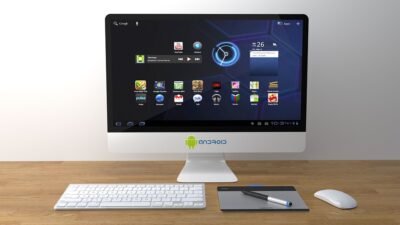In the ever-evolving world of technology, few innovations have garnered as much attention and excitement as foldable phones. With major players like Samsung, Huawei, and Motorola diving into the foldable phone market, consumers are left wondering: are these devices truly worth the hype?
The Evolution of Mobile Devices
To understand the appeal of foldable phones, we must first consider the progression of mobile technology. The transition from flip phones to smartphones changed the landscape entirely. However, as screens grew larger and performance improved, consumers began seeking devices that could offer more versatility. Enter the foldable phone—an attempt to fuse the compact nature of older mobile devices with the expansive functionality of modern smartphones.
Design and Innovation
A New Form Factor
Foldable phones come in various designs, including clamshells (like the Samsung Galaxy Z Flip) and larger tablets that fold in half (like the Galaxy Z Fold). These designs offer the convenience of portability without sacrificing screen real estate, allowing users to multitask more efficiently. Imagine having a compact phone that unfolds into a mini tablet—a game changer for productivity on the go.
Materials and Technology
The development of foldable phones has necessitated advancements in materials and technology. Manufacturers have invested in ultra-thin glass, flexible OLED displays, and innovative hinge mechanisms to create devices that can withstand repeated folding. This technological push is not just a gimmick; it represents a significant leap in how we think about screen durability and design.
User Experience: Pros and Cons
Advantages
- Multitasking: Foldable phones offer an enhanced multitasking experience, allowing users to run multiple apps side-by-side on a larger screen. This is particularly beneficial for professionals and content creators who rely on productivity apps.
- Compact Portability: The ability to fold a phone in half makes it easier to carry in pockets or bags, addressing the growing problem of smartphone bulkiness.
- Innovative Features: Many foldable phones come with unique features, such as split-screen functionality and improved cameras, catering to various user needs.
Disadvantages
- Durability Concerns: Despite advancements, foldable phones have faced criticism for potential durability issues. The hinges and screens are still more vulnerable to damage compared to traditional smartphones.
- Price Point: Foldable phones come with a hefty price tag, often exceeding $1,000, which may deter budget-conscious consumers.
- Software Optimization: Some users have reported that apps aren’t fully optimized for foldable displays, leading to inconsistent experiences.
Market Trends and Consumer Sentiment
As the foldable phone market continues to evolve, sales figures indicate increasing consumer interest. In 2021, the global foldable smartphone market was valued at approximately $1.6 billion, and projections suggest significant growth in the coming years. Manufacturers are committed to refining their designs, with second and third-generation models boasting improved features and performance.
Consumer sentiment is mixed. While early adopters and tech enthusiasts are excited about the innovation, many potential buyers are cautious, waiting for the technology to mature and for prices to decrease.
Conclusion: Are Foldable Phones Worth the Hype?
So, are foldable phones worth the adrenaline-pumping hype? The answer depends largely on your personal needs and preferences. For tech enthusiasts and those seeking a unique device that stands out, foldable phones present an intriguing option. They offer a bold vision for the future of mobile technology—combining compactness with expanded utility.
However, for the average consumer who prioritizes stability, affordability, and longevity, waiting for the next generation of foldable devices may be more prudent. As the technology further develops and becomes more mainstream, the real test will be whether the benefits outweigh the drawbacks. In the meantime, foldable phones are undoubtedly at the forefront of innovation in the mobile industry, sparking conversations about what our future devices could look like.



